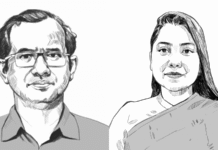Originally posted in The Daily Star on 17 January 2023
The final Integrated Energy and Power Master Plan (IEPMP), prepared by the Ministry of Power, Energy and Mineral Resources (MPEMR), is coming out in March this year – at a time when the sector may still be going through a short to medium-term crisis. However, even if the crisis is not long lived, the strategy should still go beyond to tackle problems in the medium and long run.
The government of Bangladesh has taken up a number of initiatives aligned with the global goal of net zero emissions by 2050. The Prime Minister has announced a target of 40 percent of energy coming from renewable sources by 2041, by which year Bangladesh aspires to be a high-income country.
In this context, it is crucial to review the IEPMP to understand how it will achieve clean energy targets, and the strategies that need to be adopted for the power and energy sector, keeping in mind the issue of energy security in the coming years. Considering the simultaneous challenges and broad objectives of this plan, there are scopes for improvement to make it compatible with the decarbonisation initiative.
For the first time, the IEPMP has been formulated by the Ministry of Power, Energy, and Mineral Resources to set forth a long-term energy plan covering all of the sector and energy sources, considering present conditions in Bangladesh and the global momentum towards low carbonisation and decarbonisation. Previously, the Power System Master Plan (PSMP) 2016, supported by the Japan International Cooperation Agency (JICA), was developed to help Bangladesh create a comprehensive energy and power development plan up to the year 2041, including strategies for energy balance, power balance, and tariffs.
The method of developing the IEPMP is unique on several fronts. It is a complete plan that takes both energy and power-related concerns into account. The new draft plan applies rigorous methodology to understand energy demand, energy mix, energy efficiency, and transmission and distribution of energy. Among other things, it considers three scenarios for GDP growth projection by 2050 that are based on the IMF’s long-term projection, on the Perspective Plan (PP) 2041, and in between both projections, respectively. While the PSMP 2016 had no mention of a strategic environmental assessment (SEA), this IEPMP has introduced sector-wise SEA.
However, while a consultative procedure was used, it was not at the level of partnership. As a result, the draft plan, though found to be relatively thorough (as a specialised research organisation was involved in giving technical help), still holds several preferential biases. Over-reliance on GDP estimates, reliance on coal and LNG as the most important fuel mix, and passing over of renewable energy, are the three key prejudices observed in the IEPMP.
For starters, estimating power demand based on the GDP estimate of PP 2041 makes the whole exercise unreliable, as it forecasts 90 gigawatt (GW) of electricity demand by 2050. The proposed alternate scenario of “in-between” also seems ambitious at 70GW by 2050. Rather, the scenario based on the IMF projection seems more plausible to attain.
Such a high target of power demand makes the renewable energy-based power generation target (40 percent by 2041) unrealistic. The renewables commitment has also been changed to up to 40 percent from clean energy – this, however, includes coal and other hydrocarbon-based energy mixed with advanced technologies as “clean”, which is wholly unacceptable. As a result, an alternative scenario needs to be set.
The IEPMP talks about clean energy through the promotion of carbon capture and storage (CCS) technology. While certain countries have taken up pilot projects of CCS, they ran multiple feasibility studies before launching them, which is not the case for Bangladesh. On top of that, so-called clean energy through technologies like CCS can, directly and indirectly, promote coal and coal-based energy, which deviates from the plan’s objective of moving towards low carbonisation, and makes the transition to renewable energy difficult.
The plan so far emphasises gas as a lion’s share of the energy mix, which is likely to turn out to be costly imported LNG. The IEPMP promotes LNG by emphasising demand projections and the necessity of LNG in Bangladesh. The demand for LNG is projected from the PP 2041 for the year 2050 as 7,672 mmcdf, and for the in-between scenario as 4,075 mmcdf (without high-risk potential). However, huge investment is required to establish LNG-based infrastructure, which is economically burdensome. Rather, the IEPMP must place more emphasis on domestic gas fields’ exploration to reduce reliance on long-term LNG contracts and LNG purchases from the spot market at a high price.
The draft plan does not adequately consider the financial burden of subsidy and capacity payments due to fossil fuel-based power generation and excess reserve margins. The plan is yet to properly discuss the impact and implications of energy tariffs, even though proposed technological choices could raise energy prices significantly. Amid the prevailing crisis, a clean energy scenario can instead be resource efficient, generate more power and save subsidy allocations.
The latest demand of subsidies worth Tk 56,858 crore in the power and energy sector alone, in addition to the already allocated Tk 23,000 crore in the national budget of fiscal year 2023, has created commotion. The additional subsidy demanded in the power and energy sector seems to be unrealistically high. According to the Centre for Policy Dialogue, only 42 percent of the demanded additional subsidy will actually be required.
We should also ensure that fossil fuel-based power plants that are in the process of retirement are not extended further under the Quick Enhancement of Electricity and Energy Supply (Special Provision) Act, 2010. Recently, the government announced the scrapping of coal-based plants and the gradual phase-out of HSD and HFO-based power plants. But this was neither reflected in the initial draft of the IEPMP, nor included in several meetings held afterwards. The final version of the plan needs to address alternative viable options instead of fossil fuel, and stick to the government decision of early retirement of fossil fuel-based power plants.
If the government can implement the phasing out of oil-based power plants, install solar photovoltaic technology in primary schools, and transform diesel-based irrigation systems to solar-based ones, financial resources can be saved. In the medium and long term, renewable energy can be a business case that is not only economically viable, but also profitable.
The draft interim report is also yet to include any concrete acknowledgement of strategic environmental assessment policy guidelines, feasibility studies and legal frameworks, although it was decided in the third stakeholders meeting that a draft guideline would be established. In our opinion, it is necessary to enforce a legal jurisdiction to implement SEA by the stakeholders, along with a proper monitoring and evaluation unit. This can be strengthened by capacity development workshops and feedback sessions for financial and tech-related officials.
Based on the policy’s scope, time frame, recommendations and feasibility studies, the IEPMP performs below average to moderately in terms of attaining the aim of long-term energy efficiency. However, the argument for decarbonisation is perhaps not pertinent because the efforts and processes are still at an early stage, and the performance so far is poor to below average.
Dr Khondaker Golam Moazzem, Helen Mashiyat Preoty, Shiyan Sadik and Moumita Mallick are researchers of the “CPD Power and Energy Study” of the Centre for Policy Dialogue (CPD).




